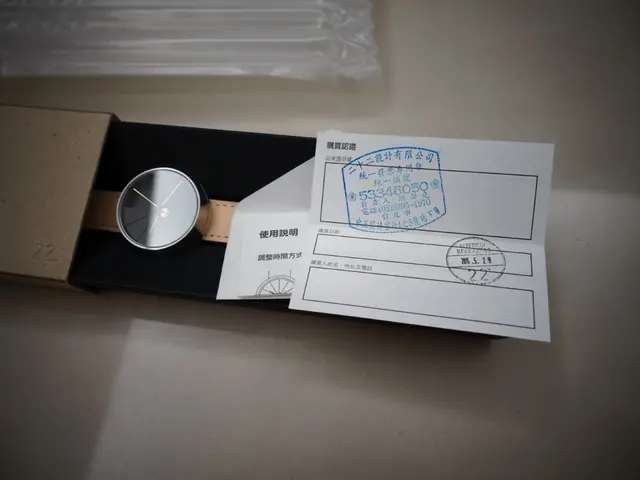Reflecting on the 2007 cyber-assault in Estonia: insights gleaned from the incident
Digging Deep Into Estonia's Cyber Battle: Lessons Learned From the 2007 Onslaught
In the realm of high-tech warfare, a nation-wide cyber attack on Estonia may sound like sci-fi lore. Yet, in 2007, this was a stark reality, thanks to the perfect storm of political controversy and successful psychological warfare[1][2][5]. This narrative is shared by Lauri Almann, permanent undersecretary of Estonia's defense ministry during those tumultuous times.
The catalyst for this tempest? A controversial relocation of a Soviet World War II statue sparked riots in Tallinn, eventually known as the Bronze Night. These protests escalated into violent clashes, looting, and arson, resulting in one death and over 150 arrests[1]. But these disturbances were only the beginning. Simultaneously, Estonia experienced a cyberattack on its government and financial institutions, believed to have originated in Russia.
In the government's secure Command Center, officials watched the chaos unfold. "On the second day of riots, a government press officer stumbled in, unable to upload press releases to the government's web portal," recalls Almann. Little did they know, the cyber assault had already begun, targeting various government websites and the Reform Party – Estonia's ruling party[1].
Battling Cyber Demons: Key Takeaways
Lesson One: Be Cyber-Ready, Always
"Estonia got lucky," says Almann. The country's intelligence services had recently informed the government about the potential for cyber attacks. Having this mental preparedness allowed them to recognize the danger signals[1].
Lesson Two: Public-Private Partnership in Action
As the government portals succumbed to symbolic attacks, news portals became the next target. But the stakes raised significantly when Swedbank, Estonia's leading bank, was attacked[1]. "Targeting a financial institution had the potential to cause widespread unrest," says Almann. Cooperation agreements with private companies saved the day, enabling rapid mitigation measures in a matter of hours[1].
Lesson Three: Talk About It
Openness about the attacks proved beneficial. It allowed the government to focus on containment instead of cooking up incapable explanations[1]. Moreover, it fostered trust between the citizens and the state, contributing to Estonia's e-services growth story[1]. In retrospect, the attacks turned into a stepping stone for Estonia's rise as a thought leader in cybersecurity[1].
Today, Estonia is home to NATO's Cooperative Cyber Defence Centre of Excellence and the EU's agency for large-scale IT systems[5]. Estonia's open approach to discussing cybersecurity issues has played a crucial role in its global influence[1]. In an era where secrets are hard to keep, transparency seems to be the key[5].
References:1. https://www.wired.com/2017/11/estonian-cyber-defense-lessons-2007-attack/2. https://www.nytimes.com/2007/05/10/world/europe/10estonia.html3. https://www.estonianworld.com/article/estonia%E2%80%99s-ten-year-fight-against-cyber-war4. https://www. bleedingedge.coop/governance/embracing-digital-governance-estonia5. https://www.bbc.com/future/article/20200702-how-estonias-digital-defence-tackled-cyber-attacks
- Share233
- Tweet
- Despite the 2007 cyber attack on Estonia appearing as sci-fi in retrospect, it was a real-life event triggered by political controversy and successful psychological warfare.
- In Tallinn, the catalyst for the series of events was the controversial relocation of a Soviet World War II statue, leading to the infamous Bronze Night riots.
- The riots escalated into violent clashes, looting, and arson, resulting in one death and over 150 arrests, but this was just the beginning as Estonia also experienced a simultaneous cyberattack on its government and financial institutions, believed to have originated in Russia.
- Lauri Almann, the permanent undersecretary of Estonia's defense ministry during those times, highlighted the importance of being cyber-ready, as Estonia had recently been warned about potential cyber attacks by its intelligence services, which allowed them to recognize the danger signs.
- Cooperation agreements with private companies saved the day when news portals and Swedbank, Estonia's leading bank, were targeted, enabling rapid mitigation measures in a matter of hours.
- Estonia's open approach to discussing cybersecurity issues has played a crucial role in its global influence, as it is now home to NATO's Cooperative Cyber Defence Centre of Excellence and the EU's agency for large-scale IT systems.
- Transparency seems to be the key in the era of cybersecurity, as Estonia's openness about the attacks turned into a stepping stone for its rise as a thought leader in cybersecurity and e-services growth.




